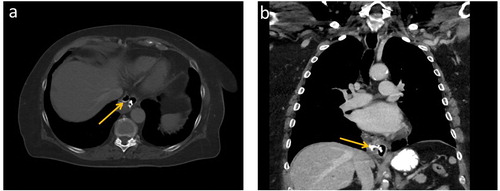Figures & data
Table 1. Clinical characteristics and course of treatment of esophageal perforation in four cases.
Figure 1. (a–c) Endoscopic view of the esophageal defect in case II. Immediately after pneumatic dilatation, a laceration 3 cm above the Z-line was observed (a). The patient was treated with Eso-SPONGE® vacuum therapy (b). After 5 days, endoscopic inspection showed healing of the esophageal wall defect with granulation tissue (c).



